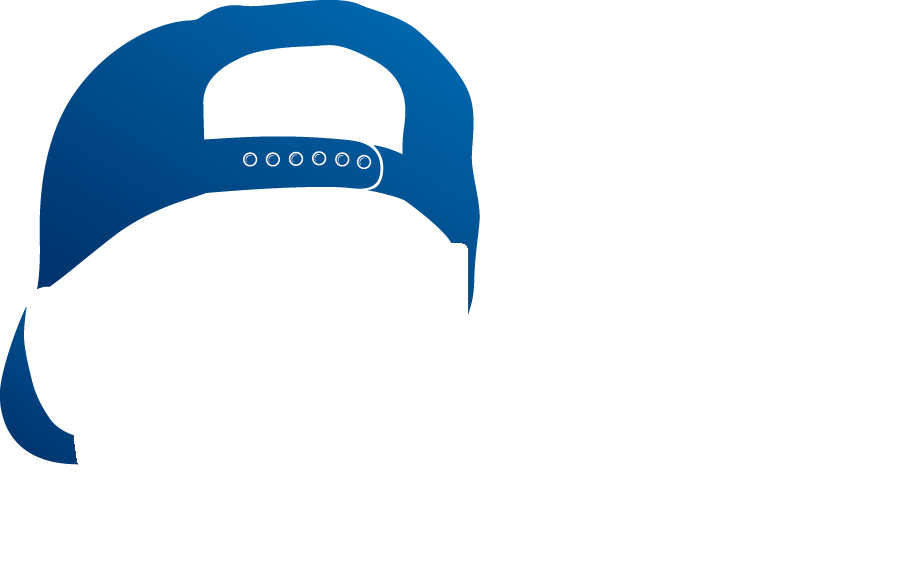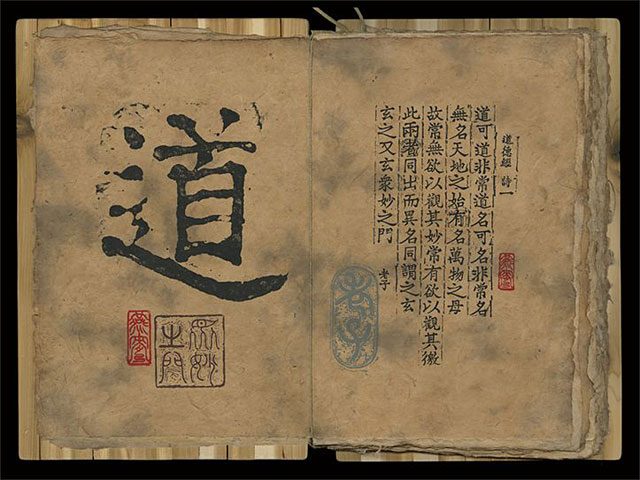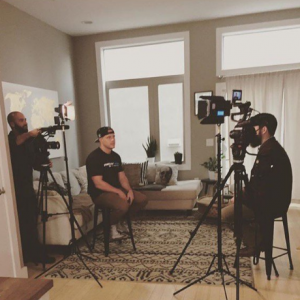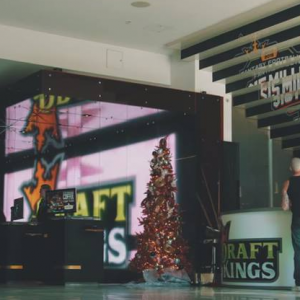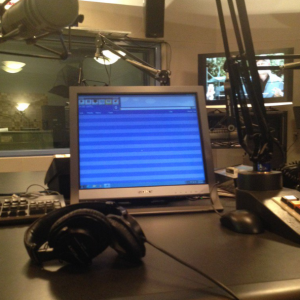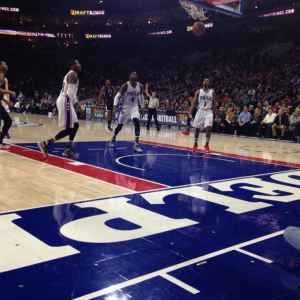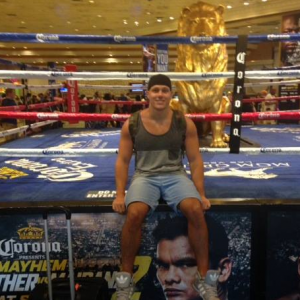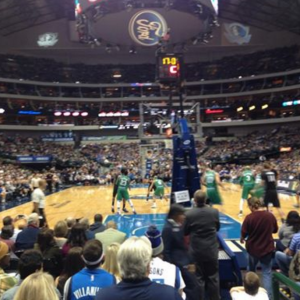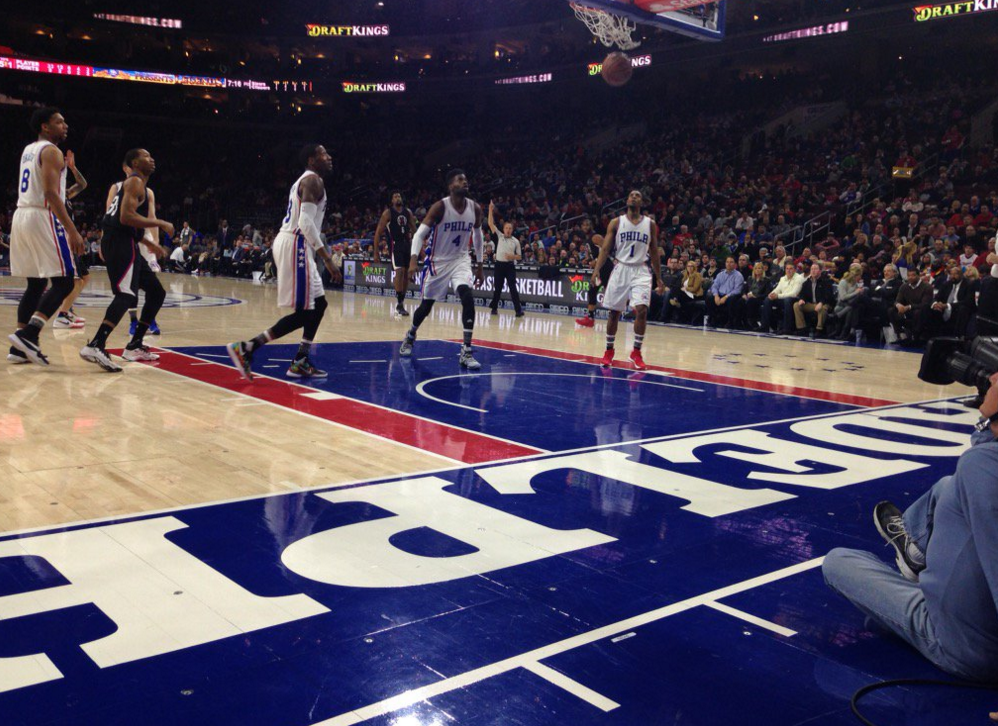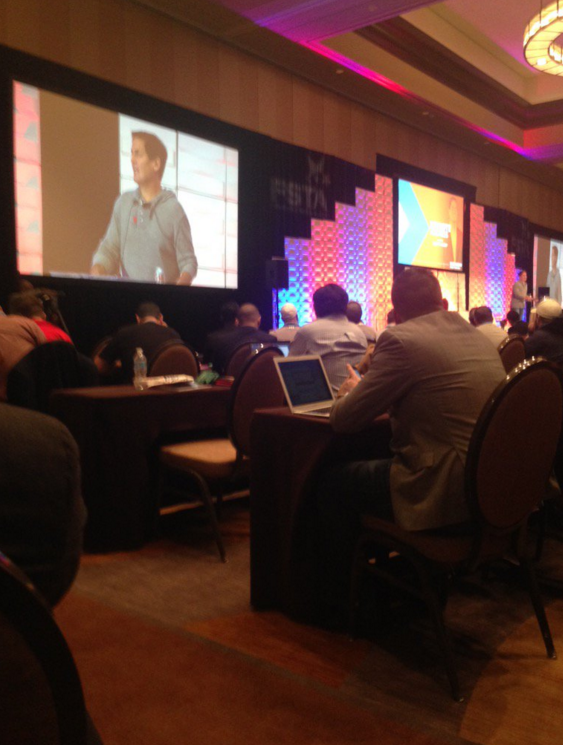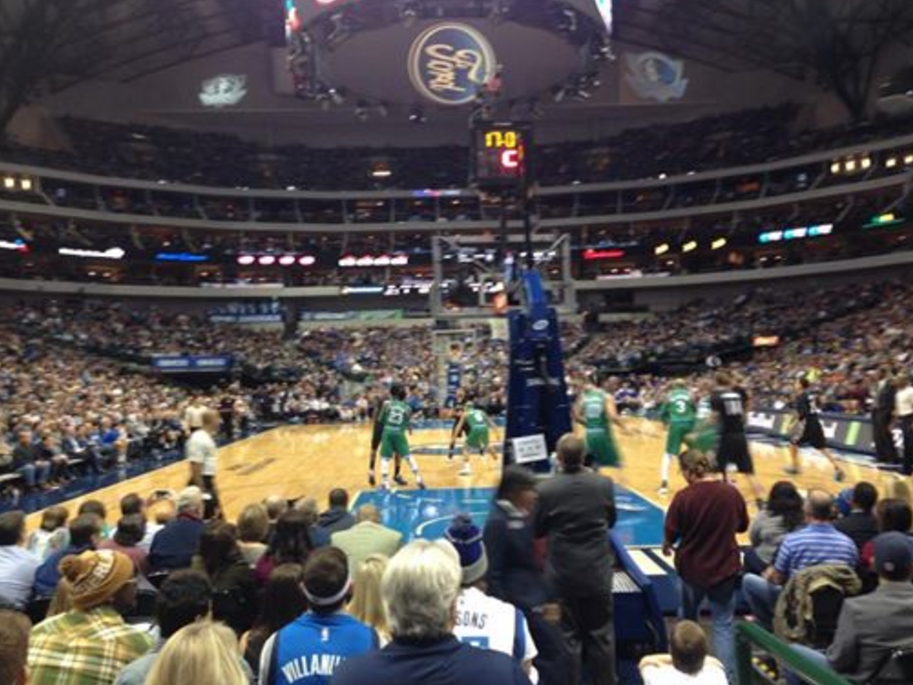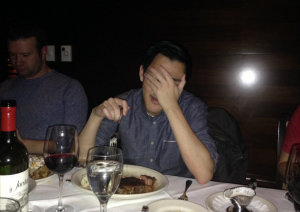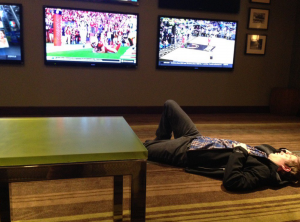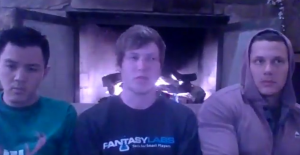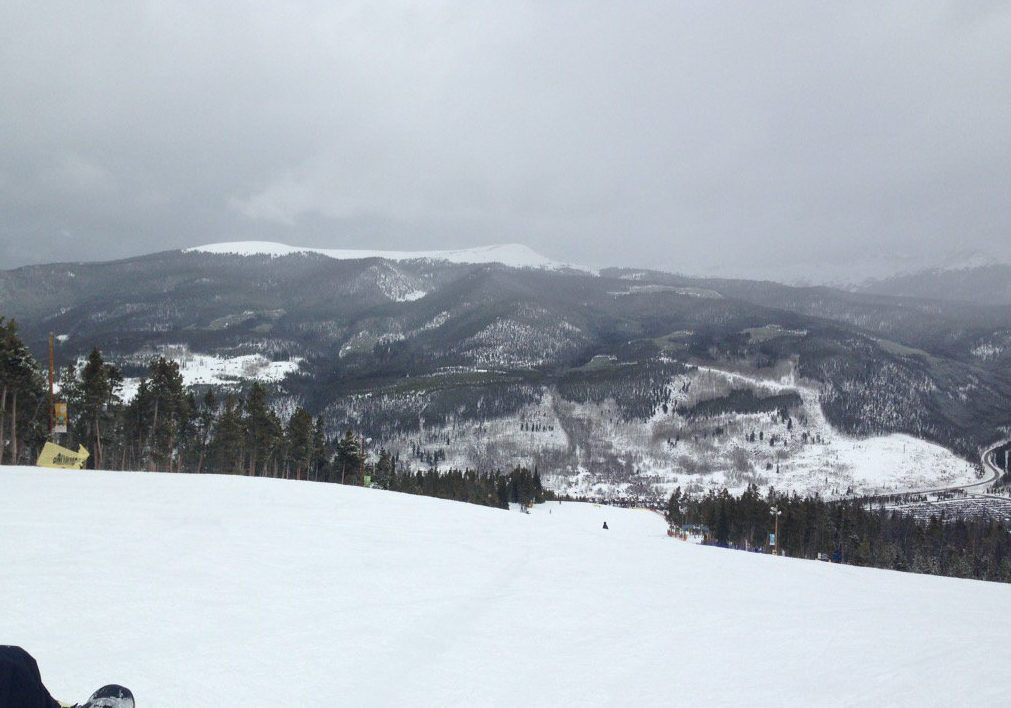I told you guys this blog would be a weird-ass collection of content, and I’m not going to disappoint.
Earlier today, I read an article about how Elon Musk believes it’s overwhelmingly likely we don’t live in a “real” base universe, but rather we’re part of a simulation. I mentioned on Twitter how I wrote a college paper on this topic, which I find incredibly interesting.
I did my final philosophy paper on why we’re probably a simulation. Super interesting. https://t.co/0UraxlY4Gu
— Jonathan Bales (@BalesFootball) June 2, 2016
A few people asked me to post that paper here, but I’m pretty sure the digital copy is long gone. I couldn’t find it in my email history – my school email no longer exists – but while searching, I did find another paper I wrote (I think my junior year). This one is about the intersection of time/cosmology in Taoism and modern physics. (Note: I stopped spelling Taoism with a ‘D’ after college…not really sure why or which one is correct, if any.)
I talk a lot about James Altucher’s “idea sex” and how the best insights come from fusing two seemingly unrelated fields, and the Eastern philosophy/physics hybrid is a popular one that’s also perhaps my favorite.
I fully expect just one person to read this article in its entirety: me. Also, some of my views have changed – and I hope I’ve become a better writer since I wrote this years ago – but I do still believe in most of the fundamental ideas. It’s worth noting I tried to tackle like five major concepts in this paper, each of which could be their own book, and I did it in one of the least entertaining ways imaginable. Enjoy!
Daoist Time and Cosmology in Light of Modern Physics
The nature of time is such that it cannot escape paradox. It is absolute, yet relative, and impermanent, yet unchanging. Its relation to our universe is also riddled with contradictions. In studying Daoist philosophy, it appears as though the concept of the Dao can help us better understand both time and its place in the universe. In turn, modern physics lends credibility to the claims Daoism has emphasized for thousands of years.
In this paper, I will try to provide an account of this holistic relationship between Daoism and physics. I will first explain how the compatibility of permanence and impermanence that characterizes the Dao can also be extended to time through Planck units, and, on a more cosmological scale, the multiverse: a timeless “sea” of continuous universe formation in which all potential universes are realized. I will then show how Everything and Nothing are interdependent, and, in a sense, the same thing. This idea will liken the multiverse to the Daoist “void,” with both concepts equating to the potential for time and existence. After explaining how the Daoist texts are best interpreted as advocating a beginning-less, yet non-eternal, Dao, I will show how a Hartle-Hawking universe fits well with these qualities. Finally, I will argue that the popular conception of the Dao as cyclical is mistaken. The affirmation of a Dao with no beginning or end can be justified without it being eternal or cyclical if the Dao is understood as a concept that can simultaneously hold “opposite” values.
Thus, the Dao, just like time, is inherently paradoxical. It is impermanent, yet never changes. It has no beginning, yet is not eternal. It is Everything, yet does not even exist.
Daoist thought, unlike much Western philosophy, dismisses the notion of true opposite values. Those qualities we generally view as “opposites” actually complement one another. Artificiality, for example, is not a distinct characteristic that is inherently opposed to naturalness, but a contrasting quality that supports, and even allows for, naturalness. What would it mean to say everything is artificial if we had no conception of what is natural? From section two of the Daodejing:
The difficult and the easy complement each other; the long and the short off-set each other; the high and the low incline towards each other; before and after follow each other.
To grasp any of these qualities, you must understand the other. The rejection of a distinct dichotomy also creates a range of contrast. A cell phone is not inherently artificial, but only more or less so than something else. Thus, “opposing” qualities take on a pluralistic characteristic: not absolute, yet not radically relativistic, as the ‘absoluteness’ comes with the implementation of a ‘relative’ perspective. This allows for the concurrent existence of contrasting qualities without a logical contradiction.
Permanence and impermanence hold this complementary, interdependent relationship. The two can not only exist together, but, because they are not diametrically opposed, also support one another. The first passage of the Daodejing illustrates the paradoxical nature of the Dao as it relates to permanence. It reads “The way that can be spoken of is not the constant way.” The Dao is a concept that is often thought of as being permanent, so how can the Dao be both constant and changing?
To illustrate how this can be, imagine the life of a tree. It may start as nothing more than an acorn, yet ultimately transforms into a massive living structure. Although the fully-developed tree has none of the original material that was contained in the acorn, there is something that links the two. The tree has some sort of enduring identity, even though it is a process of constant transformation. In fact, the permanence that gives the tree its identity can be conceptualized from the phrase “constant transformation.” If the tree is truly always changing, then the change is a permanent quality of the process. Analogously, if the Dao is always transforming, then it is a permanent Dao. Not only can the permanence and impermanence of the Dao be maintained without a contradiction, but each quality is a necessary condition for the existence and flourishing of the other.
The complementary relationship between permanence and impermanence that Daoism emphasizes is really only just being discovered by modern science. Instead of drawing the proverbial “black and white” conclusions of old, contemporary physics is so much based on the “gray” area in which contrasting qualities come into play.
One component of physics that may support the Daoist permanence/impermanence complementary relationship is Planck time. Planck time is an incredibly small unit of time (roughly 5.4 x 10^-44 sec) at which physics literally breaks down. At this point, thought of as the smallest possible unit of time (even theoretically), physics and time become meaningless (Kaku, 237). Nonetheless, the permanent flow of time is a seamless connection of finite lengths of time. Whether the Planck time is truly the smallest possible unit of time is irrelevant. What is important is that the unchanging fluidity of time does seem to be composed of imperceptible, impermanent units.
The Lieh-tzu discusses this fluid transition from past to future:
The interval between the coming and the going is imperceptible; who is aware of it? Whatever a thing may be, its energy is not suddenly spent, its form does not suddenly decay.
The unchanging qualities of both time and objects is apparent, but perhaps misleading. We are aware of permanence because, as theLieh-tzu claims, we are just incapable of perceiving constant flux. Likewise, as the dissection of time into Planck units shows, the fluidity of time is simply the connection of constant transformations. Further, since each moment in time is simultaneously the end of one moment and the beginning of another, no moment in time is permanent, and, almost paradoxically, no single moment in time really even “exists.” Thus, the permanence of time’s fluidity arises because of these impermanent, almost non-existent units of time, and, in turn, time’s impermanence can only be understood through the permanent transformation of time.
It is easier to grasp the nature of the Dao upon a complete understanding of the continuity of permanence and impermanence. As Hans-Georg Moeller writes in Daoism Explained, “The specific elements of time are not permanent, while the permanent elements of time are not specific.” In a way, time itself could not even exist without this seemingly paradoxical relationship between the permanent and the specific, as the two qualities are interdependent.
The Daoist emphasis on contrasting qualities as complementary not only supports Planck time, but also physics from a more cosmological perspective. Interestingly, the majority of physicists today believe our universe is just one of many, having sprouted into existence from an infinite “multiverse” (Kaku). This multiverse is very similar to the Dao: it is permanent and exists without time, yet is not confined to either characteristic, as impermanence and temporality arise in the “baby univserses” that sprout from it. In this way, permanence and impermanence are maintained, as new universes come and go within an unchanging, timeless framework.
One might contend that the Daoist texts state that existence came from non-existence, or a void, which would seem to be opposed to a multiverse. For example, the Lieh-tzu claims “that which gives birth is unborn,” “When Nothing stirs, it begets not nothing but something,” and finally, “The nothingness from which we came is our true home.”
If the multiverse is something, can it also be Nothing? I argue yes, as, again, the nature of Daoist “opposite” values allows for their simultaneous existence. Because the multiverse is a true infinite, it is everything. Everything happens within it, and, importantly, it is not the place where these things happen (as it does not exist at a distinct location), but it is the happening itself. All possible universes continuously spring into and out of existence. However, if everything happens all of the time, is this not the same as nothing? Just as you cannot have artificiality without naturalness, you also cannot have Nothing without Everything. Nothing and Everything necessitate one another. If the multiverse is characterized by infinite creation, then it must also be equivalent to Nothing. How can nothingness exist if Everything does? Because the Everything is the Nothing, and the Nothing is composed of Everything (in much the same way that time retains permanent and changing qualities). To describe the nature of the multiverse in a Moeller-inspired phrase: The specific elements of the multiverse (or Dao) are not permanent, while the permanent nature of the multiverse (Dao) is not specific.
The interdependency and possible equalization of Everything and Nothing may also be the solution to the contradictions of set theory, the branch of mathematics dealing with the logic of sets. Various philosophers and mathematicians have found paradoxes within set theory, nearly all dealing with the inconsistencies of a self-containing infinite set. Imagine a set of things which does not contain itself, such as the set of all computers. If we then take all of these non-self-containing sets and put them into an ultimate “set of sets” which do not contain themselves, a contradiction arises. Does this ultimate set contain itself? If it does not contain itself, then it cannot be considered a full set. If it does contain itself, however, then it is not a set which does not contain itself. The set of all sets which do not contain themselves, then, seems to be inherently impossible (Russell).
Like the set of all sets, the multiverse, if it is Everything (and not just every existing thing), must contain the set of all non-existing universes (analogous to the set of all sets which do not contain themselves). The paradox here is obvious; the multiverse, a set of all existence, cannot possibly contain a non-existing universe if it is simply Everything. To contain non-existence, a true infinite (or set of all sets, or multiverse, or Dao) would have to be both Everything and Nothing. In viewing the multiverse in this way, the paradox of the set of all non-self-containing sets vanishes, as the Nothingness which is the multiverse allows for non-existence, while the quality of Everything which embodies the multiverse arises from the set of all existing universes that spring forth from it. The multiverse avoids the self-referentiality of non-self-containing sets because, when viewed as a “void of Nothing,” the multiverse is simply the potential for the set of Everything, not a set itself. The paradox of the “existence” of non-existence can only be solved if this is the case.
Viewing the multiverse as simultaneously being Everything and Nothing also fits well with the Daoist texts. The Lieh-tzu says:
Will the Way end? At bottom it has had no beginning. Will there never be more of it? At bottom it does not exist. Whatever is born reverts to being unborn, whatever has shape reverts to being shapeless. . . That which is born. . . must come to an end.
The Dao exists yet also does not exist. In a similar way, the multiverse is Everything, yet also nothingness. Furthermore, not only are these two qualities compatible, but it is because the multiverse is Everything that is must also be Nothing.
Like the Way, the multiverse will never end because it never began. However, neither is eternal because neither exists in time. Both the multiverse and Dao are atemporal. The Dao retains permanence through constant change, a process that takes place in time, but the permanence of this process is non-specific, and thus escapes time’s limitations. Likewise, the multiverse is the source of time, yet is itself not limited by time. The multiverse, like the Dao, escapes time by metaphorically embracing time’s impermanent nature. Again, the multiverse is not a place where change takes place, but the unchanging process of constant alteration itself.
To further emphasize how the multiverse can, like the Dao, be Everything and Nothing and exist and not exist simultaneously, let us return to the tree metaphor. The entire tree grows from a bundle of potential: the acorn. Is the tree the same thing as the acorn? As I have discussed, yes and no; the potential for a tree exists in the acorn, but not the full-grown tree itself. The acorn is analogous to the multiverse because of this potentiality. Inside the acorn, the tree “exists” and does not exist simultaneously, its existence occurring in sheer potentiality, its non-existence arising because it is not yet actualized. While this metaphor is limited by the fact that the acorn is an actualized entity, the premise remains; the acorn, whether actualized or not, contains the tree’s existence and non-existence within it, just as the multiverse is simultaneously Everything and Nothing. The acorn has everything needed to develop into a tree, yet, because the acorn contains only “tree potential,” it is also, in a sense, nothing. The nothingness of the multiverse, like the acorn, comes in its potentiality. Further, the acorn (impermanence) and tree (permanence) support one another because, as the tree develops, it creates more indeterminate acorns that will lead to more determinate trees. Likewise, the permanence of the multiverse and Dao is caused by the constant transformation they undergo, and this change is supported by the unchanging nothingness, the sheer potential, that characterize them. All three concepts, the multiverse, Dao, and acorn, then, are holistic and self-supporting.
The process of indeterminacy, or nothingness, producing determinacy is discussed in the Lieh-tzu:
There was Primal Simplicity, there was Primal Commencement, there were Primal Beginnings, and there was a Primal Material. The Primal Simplicity preceded the appearance of the breath. The Primal Commencement was the beginning of the breath. The Primal Beginnings were the breath beginning to assume shape. The Primal Material was the breath when it began to assume substance. Breath, shape and substance were complete, but things were not yet separated from each other; hence the name “Confusion.” “Confusion means that the myriad things were confounded and not yet separated from each other.
Interestingly, the details of this passage contain striking similarities to the way our own universe may have arisen. The Primal Simplicity, equivalent to potentiality, preceded the birth of the universe, and is thus analogous to the multiverse. The Primal Commencement, Beginnings, and Material were then congealed into a state of indeterminate “Confusion.” This “Confusion” is similar to the relationship our own physical laws had just after the birth of the universe. At a time of just one Planck unit after our universe was born, the four fundamental forces that govern our cosmos were muddled together into one indeterminate superforce. Thus, the Primal Simplicity, “Confusion,” and separation of the myriad things are comparable to the multiverse, superforce, and separation of the four fundamental laws of physics.
Notice that the Lieh-tzu account of Primal Simplicity does not stress a beginning in time. The initial ‘void’ and succeeding “Confusion” are what the Lieh-tzu emphasizes, not a distinct moment of creation. It appears, then, that the text may be arguing for a universe that emerged from a “beginning-less beginning,” where it sprouted into existence, yet not at a definite moment in time.
If the multiverse and Dao truly are without a beginning, inevitably, two questions arise: Is the universe eternal, and is it cyclical? There seems to be some evidence that our universe could be without a beginning, yet not eternal. It comes in the form of a Hartle-Hawking universe in which, at the “beginning” of the universe (when the myriad things were in a state of “Confusion” and the laws of physics were congealed together), the time dimension fades away. Instead of originating from a definite point in time, a Hartle-Hawking universe comes from a boundless, timeless state of indeterminacy (Hawking, Penrose, 86). Conceiving of the beginning of our universe, then, is as futile as pointing out the “edge” of the surface of a sphere. The surface of a sphere is boundless, yet not infinite, in much the same way that a Hartle-Hawking universe is boundless, yet not eternal.
While our own universe can maintain a timeless “beginning” without being eternal, so can the Dao. As the Lieh-tzu says, “Everything that is born reverts to being unborn.” Nothing can escape death and change except the multiverse and Dao, as they were never “born.” Quite paradoxically, their “beginninglessness” and ability to escape time arise from the constant flow of time that characterizes their existence. Whether our universe escapes eternity through the Hartle-Hawking concept or from being part of the multiverse (or even a combination of both), the fact that it is indeed without a beginning, yet not eternal, makes it strikingly similar to the Dao.
The quality of being without a start in time that many scholars attribute to the Dao has led many to claim that it is cyclical. Section 52 of the Daodejing, for example, reads “Go back to holding fast to the mother, and to the end of your days you will not meet with danger.” In The Philosophy of the Daodejing, Hans-Georg Moeller argues that this passage indicates both time and the Dao are cyclical. He says, “That it is possible to return to the beginning implies that time is understood as a circle.” I argue, however, that this interpretation is flawed. Even if time were cyclical, the ability to return to the “beginning” would prove impossible, as a cyclical existence suggests no ultimate beginning. Cycles of birth and death can certainly arise, so “returning” within these cycles is possible, but they do not necessitate the Dao or time being cyclical.
Further, current research in physics suggests that our own universe is not cyclical. The expansion of the universe appears to be speeding up exponentially. Physicists are nearly unanimous in agreeing that the universe will “end” in a “Big Freeze in which, because there is not enough matter to reverse the expansion, the universal temperature will approach absolute zero (Kaku, 20).
Unlike scholars such as Moeller, however, I argue that this evidence does not contradict the nature of time and the Dao in the Daoism. The rejection of an absolute end of time that a cyclical universe implies does fit well with the texts. Section 14 of the Daodejing, when speaking of the Dao, says “Go up to it and you will not see its head; follow behind it and you will not see its rear.” While this passage could be interpreted as an implication of the Dao being cyclical, it does not necessitate a cyclical Dao. You cannot view the beginning or end of a cycle because there are none, but there are also no beginning or end to a flow of time that exists within a timeless framework. The implementation of a cycle implies that the Dao is part of time. As I showed earlier, however, the texts are probably best interpreted as advocating a Dao that is outside of time, yet still part of it. This way, the Dao can govern the natural cycles that occur within it, yet still retain permanence. The fact that our universe will end in a “Big Freeze” also lends support to the notion that time does not have to be cyclical for there to not be an ultimate end. The universe will never truly “end” because the universal temperature will only approach absolute zero, never reach it.
I liken Daoist time to the numbers between (but not including) zero and one. If one represents the “beginning” of time with the smallest number of the set and the “end” with the largest, then both beginning and end will hold paradoxical properties. Neither exists because there is no smallest or largest number, yet both must exist or else we could never reach the number one (or attain the seamlessness of time). The set of numbers, then, is boundless but not a true infinite, just as time is boundless, yet not eternal. The impermanence of the amount of numbers in the set does nothing to affect the permanent relationship between zero and one. This phenomenon is analogous to Planck time, with the connection of impermanent, almost non-existent segments creating an unchanging fluidity.
Ultimately, the similarities between Daoist time and modern physics are analogous to the Dao itself: self-explanatory, paradoxical concepts marked by the concurrent existence of interdependent “opposite” properties, meaning we can implement physics to reaffirm basic Daoist tenets, and, in typical Daoist fashion, vice versa.
Works Cited
Graham, A.C. (Translated). The Book of Lieh-tzu. New York: Columbia University Press, 1990.
Hawking, Stephen and Penrose, Roger. The Nature of Space and Time. Princeton: Princeton University Press, 1996.
Kaku, Michio. Parallel Worlds. New York: Random House, 2005.
Lau, D.C. (Translated). Tao Te Ching. Hong Kong: Chinese University Press, 1996.
Moeller, Hans-Georg. Daoism Explained. Chicago: Open Court, 2004.
Moeller, Hans-Georg. The Philosophy of the Daodejing. New York: Columbia University Press, 2006.
Russell, Bertrand. Principles of Mathematics. Cambridge: Cambridge University Press, 1903.
